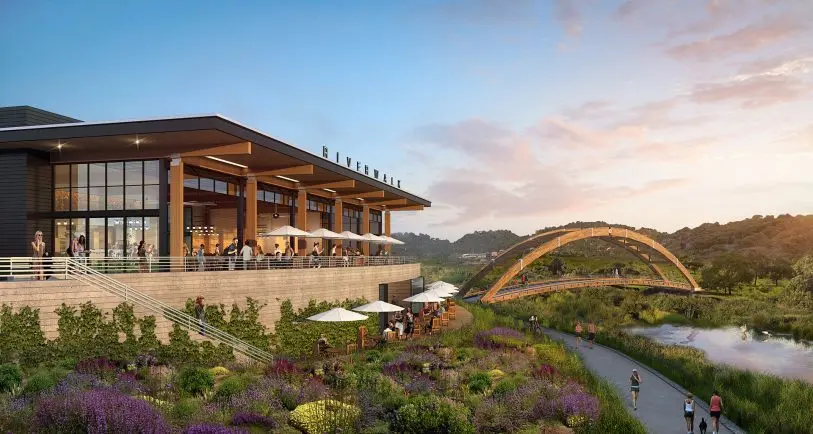In Akron, Ohio, a former golf course is turning into a park and being replanted with native trees. In Kent, Washington, a new mixed-use apartment complex is under construction on another former golf course. Near Palm Springs, a golf course is becoming a mixed-use “agrihood” with 75 acres of olive groves that will be used to produce olive oil. In Japan, a massive solar farm now sprawls over what used to be another 27-hole course.
“I think that there is an opportunity given the fact that we have land shortages in lots of our fast-growth cities and suburbs and we have an overabundance of golf courses,” says Ed McMahon, a senior resident fellow at the nonprofit research and education organization the Urban Land Institute. “I think you’re going to see in the future an even greater push to redevelop some of this land into other things.”
More than 200 golf courses closed in the U.S. in 2017, according to a report last year from the National Golf Foundation. After a rush to build courses before the recession–thousands opened between 1998 and 2006, in many areas alongside new housing development–the current trend of closures began. More than 1,200 have closed since 2005. Demand from golfers didn’t keep up with the supply of facilities.

“I think a lot of both private developers, as well as public parks systems, are seeing that and they’re making the decision: Okay, what’s the better thing here?” says Charlie McCabe, the director for the Center for City Park Excellence at the nonprofit Trust for Public Land. As the courses have closed, more than a dozen started turning into parks or nature preserves. In Detroit, the city plans to turn a course into a park with nature trails and space to capture stormwater. Near Seattle, the city of Bothell bought an 87-acre course to create public open space and to restore wildlife habitat. In Wisconsin, one former course now has wetlands and forested areas to support migratory birds. In Englewood, Florida, another is now a wildflower preserve.
In some cases, those parks were first slated for housing development, but neighbors resisted. In areas with severe housing shortages, NIMBYism poses a challenge to any hope for building homes on golf courses. Courses tend to be in wealthier neighborhoods, since the open space pushes up home values, and residents usually want to preserve their views. In Denver, an idea to turn a golf course into affordable housing faced opposition from those who wanted it to become open space (as of the beginning of 2019, the future of the site was unclear). When a developer proposed building housing, including some affordable units, on a golf course in New Jersey, residents raised concerns about traffic. A proposal in Pennsylvania led to protests from some residents. “Most of the proposals for redevelopment that I have seen tend to run into some opposition,” says McMahon.
Developers may have more success when they keep open space as part of the plan. In San Diego, one new proposed development includes plans for 100 acres of public parks and open space along the San Diego River. “Out of a total 200 acres available to us, we’re setting aside 100 acres for open space, and we’re going to make available recreational space to people that previously would have had to pay for a round of golf to enjoy it,” says Eric Hepfer, director at the development company Hines. It also includes up to 1 million square feet of office space and more than 4,000 new units of housing–in a central part of San Diego, which is suffering from the same housing crisis as the rest of California–all next to a transit line. “The housing that we’re producing and the open space that we’re providing is all accessible via transit, which really is a huge issue from an environmental perspective because we’re able to reduce greenhouse gas emissions.”
It’s something that’s likely to continue to happen in other cities. “Obviously, large tracts of land in close-in suburbs and cities are hard to find,” says McMahon. “So you’re going to see a lot more pressure on these golf courses.”
Recognize your brand’s excellence by applying to this year’s Brands That Matter Awards before the early-rate deadline, May 3.
